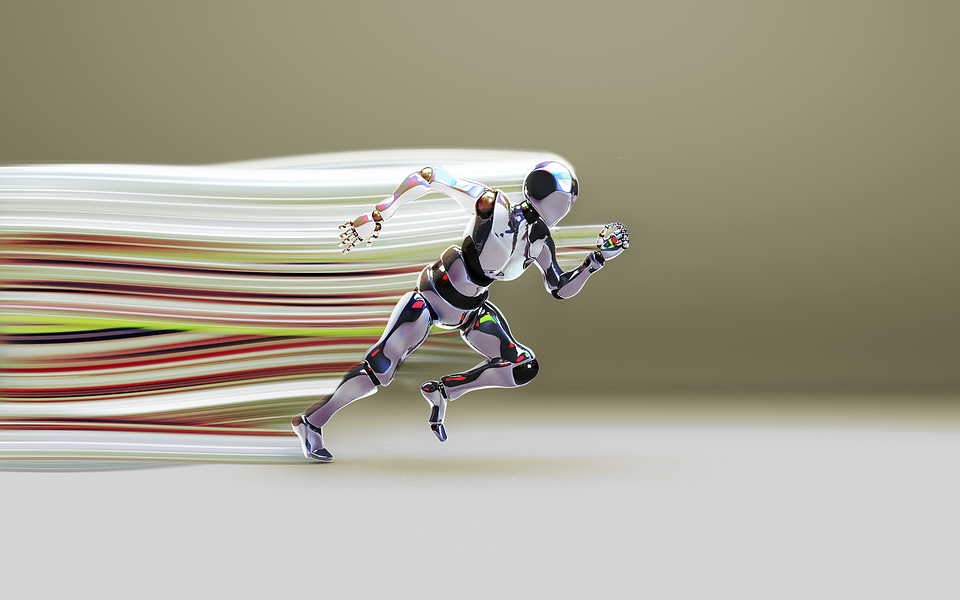
THIS ARTICLE IS THE LAST OF THREE PARTS ABOUT HOW DIGITAL TECHNOLOGY'S UNSTOPPABLE, ALL-ENCOMPASSING RISE COULD VERY WELL SHAKE THE FOUNDATIONS OF PHYSICAL WORKPLACE DESIGN AS CONTEMPORARY DESIGNERS KNOW IT. READ PART ONE HERE AND PART TWO HERE.
Most of us are aware of the wide range of opportunities we have to capture data in the modern workplace using heat maps, sensors, and the endless range of analytic tools now available. In addition companies like Johnson Controls, Siemens, and Schneider Electric, to name a few, offer smart building technology and monitoring that help tenants get a clearer picture of potential energy savings and efficiency improvements. We’re spoiled with data; consequently, the larger issue today is in ensuring that what we have isn’t just data—but meaningful information that leads to greater knowledge.
The challenge is exacerbated by the fact that smart systems don’t talk to one another. The day when all the smart technologies speak the same language will be the day those interested in real time dynamic measurement and analysis can celebrate. In the meantime, keep the cork in the champagne and relish the advancements we have made. Without meaning to disparage the value these technologies bring in obtaining a snapshot of workplace efficiency, this third and final post on the impact of digital on physical office design will follow the lead of the others and focus on people, their efficiency, and experience in the workplace rather than the physical environment itself.
Weapon of mass production
While smart building systems do smart things around us, most of us carry a secret digital weapon in the palm of our hand, our mobile phone. When properly outfitted it has the potential to radically increase our personal efficiency. The possibilities are even greater with new chips that enable instantaneous artificial intelligence. Combined with a digital personal assistant and an army of "bots" to do our bargaining for us, our mobile can be transformed into a performance tool that has the potential to do more for an organisation than any space analytics tool. This is critical because, at the end of the day, improving personal efficiency and supporting people is why we have a workplace.
COMBINED WITH A DIGITAL PERSONAL ASSISTANT
AND AN ARMY OF "BOTS" TO DO OUR BARGAINING
FOR US, OUR MOBILE CAN BE TRANSFORMED INTO A
PERFORMANCE TOOL THAT HAS THE POTENTIAL TO DO
MORE FOR AN ORGANISATION THAN ANY
SPACE ANALYTICS TOOL.
Consequently, developers like Apple, Google and Facebook have shifted their focus from personal computers to mobile devices and messaging, and they’re hard at work improving the effectiveness of messaging with the goal of making it a portal for all things we do on mobile. The tech giants are no dummies—they recognise messaging is the prime means of business communication in parts of the world like India and Indonesia. And in the West, there’s deep market penetration with various messaging apps like Facebook Messenger, iMessage, WhatsApp, Kik, Line, Viber, Telegram, Slack, and Hangouts.
Given its breadth and the amount of time we spend on our mobile, there’s a priority to humanise messaging, as well as study how digital technology affects the way we experience and convey emotion. Machine learning has the ability to ratchet up messaging with smart replies that are calibrated to the content and context of a conversation, causing them to be more natural over time. As we experience better face-to-face and voice-to-voice interactions, we’ll see text-based communications replaced with multimedia offerings. Emojis, GIFs, and short videos have great potential to augment text and assist in expression.
Express yourself
A persistent issue with emails and written communications is misconstrued messages due to the limitations of typing in expressing ourselves. Following the adage that a picture is worth a thousand words, recently launched apps like VidiiChat illustrate how AI can be engaged to improve our ability to get our point across. Vidii provides the option of adding high-definition, full-audio video to ordinary text messages and then uses the phone’s camera to scan facial expressions to analyse the recipient’s emotional response. The app issues the sender an emoji receipt to confirm the recipient enjoyed the message.
Many of these offers are larks at the moment, intended to be used to communicate with friends and family. Nevertheless, it isn’t hard to imagine how improving written communication and offering immediate feedback could help with common problems many organisations face today with low employee engagement scores and widespread lack of emotional intelligence among people.
Another area with the ability to improve workplace performance comes from the many voice-activated personal assistants on the market today: Siri, Cortana, Alexa, or Google. Now that they’re using Artificial Intelligence algorithms, they’ve moved from being cute developer parlour tricks to useful tools, thanks to machine learning and its ability to recognise and process speech, and connect to The Internet of Things or an army of bots.
NOW THAT [MANY VOICE-ACTIVATED PERSONAL ASSISTANTS ARE ]
USING ARTIFICIAL INTELLIGENCE ALGORITHMS, THEY’VE MOVED
FROM BEING CUTE DEVELOPER PARLOUR TRICKS TO USEFUL TOOLS,
THANKS TO MACHINE LEARNING AND ITS ABILITY TO RECOGNISE
AND PROCESS SPEECH, AND CONNECT TO THE INTERNET OF THINGS
OR AN ARMY OF BOTS.
Bot-onomy
Bots are rapidly taking over for Apps as the go-to method for communication on mobile devices. They’re software applications that perform repetitive tasks. Their advantage is they perform them faster than you or I, and they don’t complain. A common bot task is chat. Some times when you think you’re chatting with a person, you may be actually chatting with a bot; they mimic human interaction and conversation, and have a high level of intelligence with, theoretically, some capacity to learn.
There are e-commerce bots that assist us in buying goods and services. Food bots to order dinner. Content bots, Watcher bots, Workflow bots, Concierge Bots, and Banking and Trading bots that provide financial services. These new business bots have crossed the divide to make our worklife more productive, particularly when working in tandem with a personal assistants like Google’s assistant Allo. Imagine messaging a colleague about a meeting and simply typing “@google” to instruct the assistant to organise inviting attendees, reserving the video conference room, and ordering lunch for your meeting.
As we begin to experience the workplace differently, the Digital Revolution will have an impact on the physical environment, no doubt. But right now, it’s busy improving the EX—employee experience. As has been mentioned in past posts, this places the onus on designers to broaden their horizons, and move beyond form and function toward end-to-end employee experiences. And in the meantime, it would serve us well to not only understand but make interfaces and software our friends. 
This article was reprinted through the courtesy of Futures Rambling. Read the original article here.

